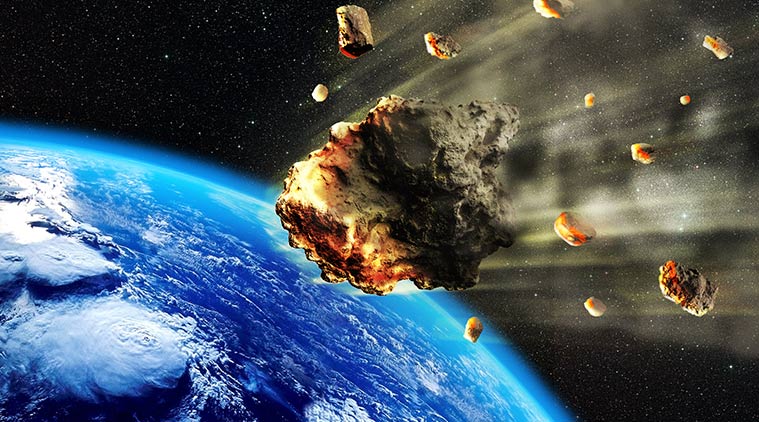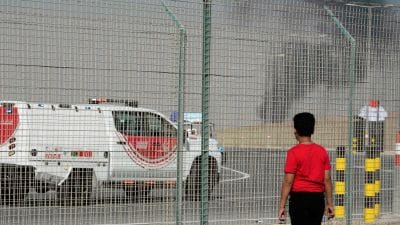Giant dust cloud triggered by asteroid collision sparked explosion in the Earth’s early life
A huge dust cloud swept across the solar system sparked an explosion in primitive life on the Earth. The dust got created after a huge asteroid got smashed into pieces after a collision somewhere in between Mars and Jupiter, scientists said.
 A 93-mile-wide giant asteroid that got destroyed and had scattered so much dust in the solar system that it had even blocked some of the sunlight from reaching the Earth. (Representational image: Getty/Thinkstock)
A 93-mile-wide giant asteroid that got destroyed and had scattered so much dust in the solar system that it had even blocked some of the sunlight from reaching the Earth. (Representational image: Getty/Thinkstock)
A giant dust cloud which swept across the ancient solar system had sparked an explosion in primitive life on the Earth, scientists have said. The dust got created after a huge asteroid got smashed into pieces after a collision somewhere in the middle of Mars and Jupiter almost half a billion years ago, The Guardian reported.
The 93-mile-wide giant asteroid that got destroyed and had scattered so much dust in the solar system that it had even blocked some of the sunlight from reaching the Earth, according to researchers. Because of this, the average temperatures had dropped for at least two million years. As the colling happened for such a long period, life on Earth got time to adapt.
While there were many species that continued to carry on in the warmer spots near the equator, other species got evolved and made the most of the freshly-formed colder regions of the Earth, the report said. It is the first time that scientists concluded that dust particles from a broken-up asteroid could lead to global cooling that triggered an ice age on Earth, according to Birger Schmitz, a professor of nuclear physics at a university in Sweden.
According to the evidence from rock formations, our planet had experienced a short-lived ice age approximately 466 million years ago. Due to the fall in temperatures, the surface water turned into ice which covered most of the Earth. This led to a fall in sea levels. This coincided with an apparent rise in the diversity of life on the planet, most of which was still in the oceans.
The researchers looked for clues in the ancient limestone rocks that are exposed at the sites in southern Sweden and near Russia’s St Petersburg. They particularly looked for remnants of the giant asteroid, which geologists call the “L chondrite parent body”. The researchers dissolved more than a tonne of limestone rocks of different ages from the sites after that they picked what was leftover.
According to their findings, after the destruction of the asteroid, the grains that matched its chemical make-up rose between 1,000 and 10,000 times. These levels continued to stay high for 2-4 million years.
“The grains come with the dust so when you see an increase in these, you know there’s been an increase in the dust,” the report said quoting Schmitz.
The tests on ancient limestones showed a sharp rise in the levels of a helium isotope which streams out of the Sun in the rise of particles which are called the solar wind. As per the researchers, helium was brought in our planet when it became embedded in the space dust particles while travelling through the solar system.
The research work got published yesterday, September 18, in the journal Science Advances. The research team has described how the dust and coarse-grained particles from the destruction of the asteroid had rained down on our planet and became locked into sedimentary rocks. The giant asteroid still accounts for about one-third of the meteorites that land on Earth.
Scientists termed the apparent rise in marine life at this time as the Great Ordovician Biodiversification Event or GOBE.







